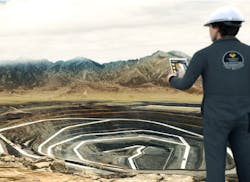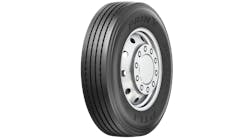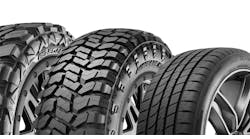"The efficient and safe construction site of the future will not operate without digital mortar," says Hans-Jürgen Duensing, a Continental AG executive board member responsible for the ContiTech Division. "Connected smart construction vehicles and machines are among the basic elements ensuring faster, safer and, above all, more efficient operations on construction sites."
Continental is actively driving the development of digital solutions for the construction and mining sectors of the future, and will showcase its current innovations, technological developments and services at Bauma, the leading international trade show for construction machinery, in Munich, Germany, from April 8-14, 2019.
Continental is focusing on the following:
* service and consultancy concepts that allow drivers, fleet managers and operators of construction sites, quarries and sand and gravel pits to measurably increase their productivity;
* predictive maintenance concepts for greater operational reliability;
* solutions for reducing downtime; and
* systems to enable drivers and fleet managers to navigate the flood of information.
All these technological concepts are underpinned by sensors that monitor the fundamental components in machinery and vehicles. The company supplies assistance systems and solutions for monitoring surroundings in response to the trend toward fully automated vehicles and machines.
Optimized route management and perfect tire use
Continental is exhibiting its extensive tire portfolio -- EM-Master for wheel loaders, RDT-Master for rigid dump trucks and Conti CrossTrac for trucks -- for different applications on construction sites, in quarries, and in sand and gravel pits at Bauma. (Conti CrossTrac products for trucks are only available in Europe except for the Conti CrossTrac HD3, which is available in the U.S. as a 19.5-inch tire. The company's truck tires for North America are the Continental HSC1, HDC1 and HTC1.)
Continental's new ContiLogger consultancy concept is designed to bring together tires, hardware, software and data "into an innovative service approach." The company uses a range of components in order to capture data such as tire pressure, tire temperature and vehicle and topographic data in real-life applications.
With the aid of the data collected, which either undergoes one-off analysis by the Continental field engineer or is continuously digitally captured by the user, recommendations can be developed for optimized route management, loading or tire use. Consequently, users can not only identify whether a tire is being overloaded or underused, and thus extend tire lifetime, but also can adapt operational processes so that overall productivity is increased.
Efficient and safe: remote condition monitoring systems for conveyor belts
The issue of service remains a focus for conveyor belt systems. Continental's goal is to ensure safe and efficient operations, especially by means of remote condition monitoring systems. Sensors monitor every movement of the conveyor belt and inspect the surfaces or the integrity of the steel cords in real time. Databases store the information, while algorithms analyze it and know when the belt requires servicing.
In this way, Continental is laying the groundwork for new business models such as pay-per-ton or the predictive maintenance of components or systems.
Smart air spring provides reliable information on pressure, temperature and height
A new air spring system with an integrated sensor system provides permanent information about the operating status in real time. Day-to-day operations of industrial applications are becoming more efficient thanks to the smart air spring. The air spring can now supply precise and reliable information on its status, e.g., pressure, temperature and height. All operations and processes will become safer, simpler and more efficient as a result, especially in the fields of control and monitoring.
HD digital camera system aids driver
Continental will be exhibiting the second generation of the ProViu 360 surround view system at Bauma 2019. The digital camera system, which helps in avoiding accidents and incidents, now provides images in HD resolution for the first time. The camera resolution has increased by as much as a factor of three.
The system assists drivers of construction and mining vehicles, showing them all the important data on an uncluttered display. This is made possible by the four-megapixel cameras and a further developed control unit. The new generation of the ProViu 360 system does not just deliver bird’s-eye images; the digital camera system can be adapted to the relevant application field to support a very wide range of activities.
It is therefore not just suitable for an all-round overview. It can also, for instance, combine additional sensor information from the vehicle with the camera images and analyze its own video information. Furthermore, the system is designed such that it can be individually tailored to the customer’s needs.
Continental is scheduled to begin producing the ProViu 360 system iin 2020.
Modular driver’s workplace for safe and efficient operations
Continental’s modular driver’s workplace (mFAP) features intuitive usability and total freedom when configuring and programming the various displays and control panels. It allows a high level of adaptability to the relevant requirements of the construction vehicles, and thus offers benefits to both drivers and manufacturers.
Drivers only have the information they really need displayed -- in their mother tongue, on request. This means they are not unnecessarily distracted, and are able to focus on the traffic and their operations. Unscheduled vehicle downtime and the risk of accidents are reduced as a result.
Low-NOx and efficient emissions technology for clean mobility
At Bauma, Continental also will be exhibiting solutions for efficient emissions technology in construction machines. The company says the challenge centers on ensuring that the exhaust aftertreatment system reaches -- and maintains -- an efficient working temperature as quickly as possible after starting the engine.
However, the possibilities for integrating catalytic converters and filters differ greatly from vehicle to vehicle. Continental has developed a range of solutions enabling further progress to be achieved in converting NOx: near-engine positioning and an architecture with an innovative combination of diesel injection and an electric heating element upstream of the catalytic converter.
“Construction sites are the starting point for future mobility," says Duensing. "Roads have to be constructed, railway tracks laid, agricultural and forest tracks built and factories erected. The construction and mining sectors are therefore key industries and an indispensable part of our world."



